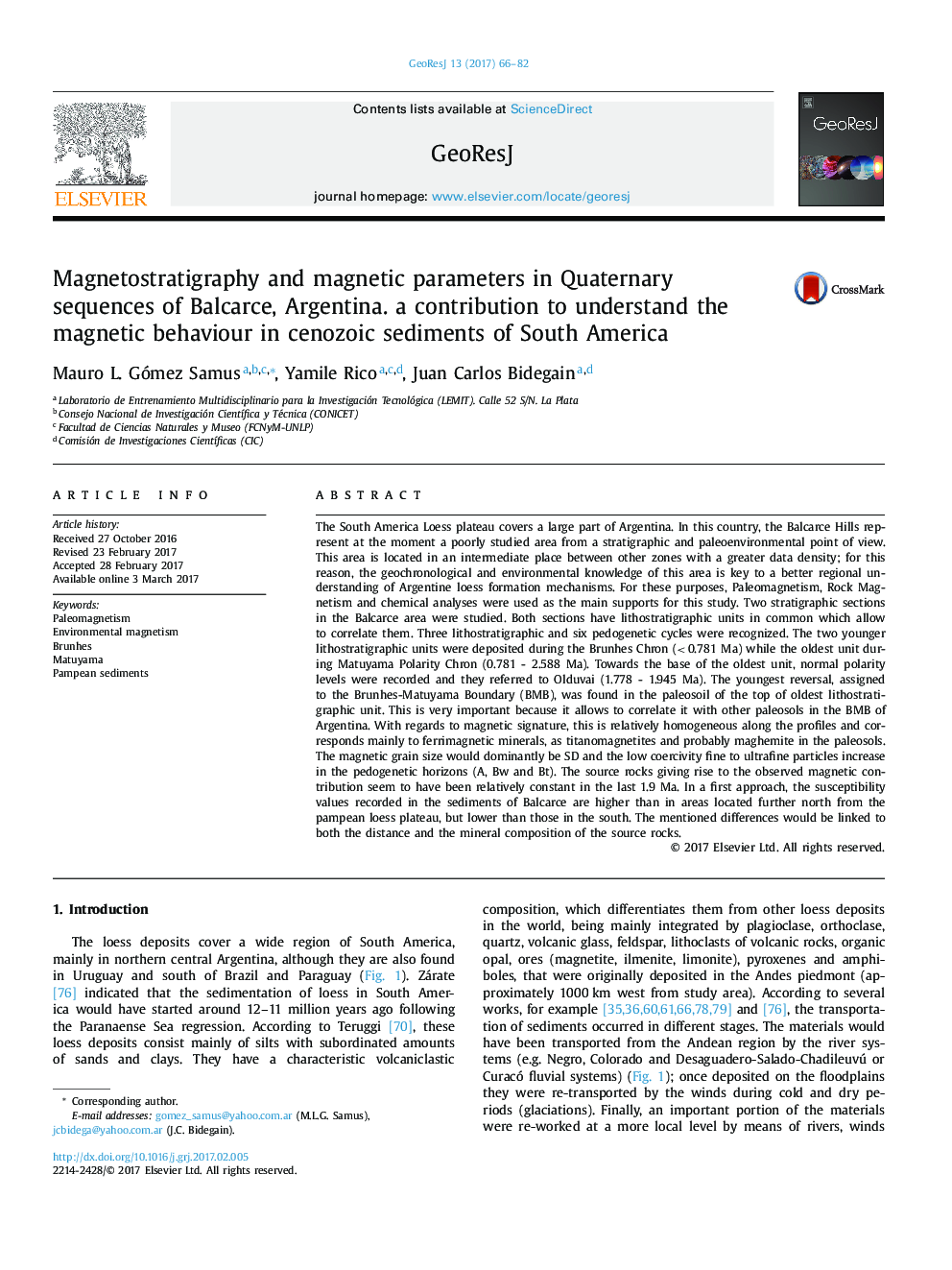| کد مقاله | کد نشریه | سال انتشار | مقاله انگلیسی | نسخه تمام متن |
|---|---|---|---|---|
| 5779206 | 1634292 | 2017 | 17 صفحه PDF | دانلود رایگان |

The South America Loess plateau covers a large part of Argentina. In this country, the Balcarce Hills represent at the moment a poorly studied area from a stratigraphic and paleoenvironmental point of view. This area is located in an intermediate place between other zones with a greater data density; for this reason, the geochronological and environmental knowledge of this area is key to a better regional understanding of Argentine loess formation mechanisms. For these purposes, Paleomagnetism, Rock Magnetism and chemical analyses were used as the main supports for this study. Two stratigraphic sections in the Balcarce area were studied. Both sections have lithostratigraphic units in common which allow to correlate them. Three lithostratigraphic and six pedogenetic cycles were recognized. The two younger lithostratigraphic units were deposited during the Brunhes Chron (<â0.781 Ma) while the oldest unit during Matuyama Polarity Chron (0.781 - 2.588 Ma). Towards the base of the oldest unit, normal polarity levels were recorded and they referred to Olduvai (1.778 - 1.945 Ma). The youngest reversal, assigned to the Brunhes-Matuyama Boundary (BMB), was found in the paleosoil of the top of oldest lithostratigraphic unit. This is very important because it allows to correlate it with other paleosols in the BMB of Argentina. With regards to magnetic signature, this is relatively homogeneous along the profiles and corresponds mainly to ferrimagnetic minerals, as titanomagnetites and probably maghemite in the paleosols. The magnetic grain size would dominantly be SD and the low coercivity fine to ultrafine particles increase in the pedogenetic horizons (A, Bw and Bt). The source rocks giving rise to the observed magnetic contribution seem to have been relatively constant in the last 1.9 Ma. In a first approach, the susceptibility values recorded in the sediments of Balcarce are higher than in areas located further north from the pampean loess plateau, but lower than those in the south. The mentioned differences would be linked to both the distance and the mineral composition of the source rocks.
Journal: GeoResJ - Volume 13, June 2017, Pages 66-82